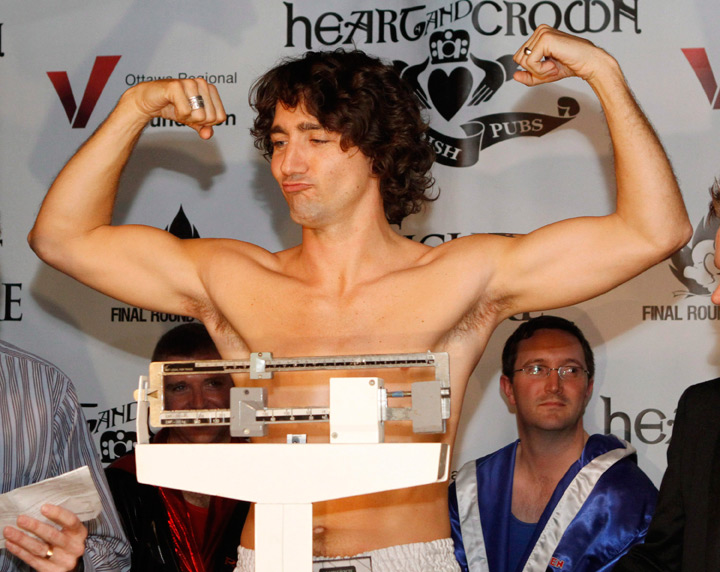The Conservatives used them to undermine him.

The world spent all week drooling over them.
Prime Minister-designate Justin Trudeau’s looks have become better-known than the policies he was elected to enact.
Either way, experts say, it says a lot about the way we perceive power, gender and public image.
Sparkles and hair
It started with an ad back in 2013.
Airing right after Justin Trudeau was elected Liberal leader, the Conservative video floated old quotes over footage of the leader taking off his shirt at a charity auction. His name appeared in swirly, sparkly font, as the narrator intoned, “He’s in way over his head.”
Another ad, on heavy rotation during the 2015 campaign, featured job recruiters saying Trudeau was “Just not ready.”
“Nice hair, though,” quipped an actor.
“His opponents have definitely tried to use his looks and this sort of thing to undermine him,” said Elizabeth Goodyear-Grant, a Queen’s University politics professor who studies gender and media coverage of politicians.
“They’ve used this to almost feminize him,” she said. “To undermine his credibility, to imply that he’s all looks and no brain, he’s a lightweight, this sort of thing. And so that’s been the goal with comments like ‘Nice hair, though.’”
The early ads with the sparkly lettering were “all about gender” said Jonathan Allen, Canada Research Chair in Queer Theory, who studies representations of masculinity.
“He’s not living up to what masculinity should be. He’s up dancing. He gets that sort of sparkly font at the end of it. …
“It’s the kind of misogyny that you see all the time. It is disappointing.”
Stereotypically masculine traits also tend to be associated with political leadership, Goodyear-Grant notes.
“So to the extent that they can undermine your masculine traits … they’re also at the same time undermining your ability to be a leader.”
That was then.
Putting ‘the Prime in Prime Minister’
Hours after Trudeau’s landslide electoral victory, the international reaction poured in.
“Is Justin Trudeau the sexiest politician in the world?” asked the UK’s Daily Mirror. Trudeau “puts the Prime in Prime Minister” said a Gawker headline.
The acronym “PILF,” which we can’t spell out here but which is easily googleable, became a trending topic online.
Goodyear-Grant figures there’s no way we’d see the same degree of attacks or sexualized headlines if Trudeau were a woman.
“It wouldn’t have been absent but it wouldn’t have been so explicit. Nobody would have been saying, ‘She’s just a pretty face. She doesn’t have what it takes to lead.’”
One example, from 2005, was Conservative politicians comparing Belinda Stronach to a prostitute, and calling her “a dipstick, an attractive one, but still a dipstick” after she crossed the floor to the Liberals. The comments were quickly derided as sexist by her new party.
“I feel like it has to do with this double-standard. Men can use sexuality and their appearance to their advantage, and it’s very difficult for women to do the same in our culture,” Goodyear-Grant said.
“It’s very difficult for a woman to be portrayed or portray herself as both beautiful or sexy and brainy. You’re one or the other.”
Talking about Trudeau’s looks trivializes his policies, Thomas says, but it probably doesn’t hurt him or his party.
“Perhaps I’m a bit cynical, but Justin Trudeau’s charisma is in some sense predicated upon being that shiny, attractive, glowing model of a Canadian family,” she said.
“This is usually something that would be an advantage – what a handsome man. Isn’t this great?”
Global News asked the Liberal party if it wanted to comment on the way Trudeau’s appearance has been discussed and portrayed. The party did not.
Obsessing over appearance does hurt political discourse in Canada, Thomas argues.
“Of all the things the next-day news could have been discussing, the physical attributes of the person who is presumed to be the next prime minister of Canada, really should have been lower on the list.”


Comments